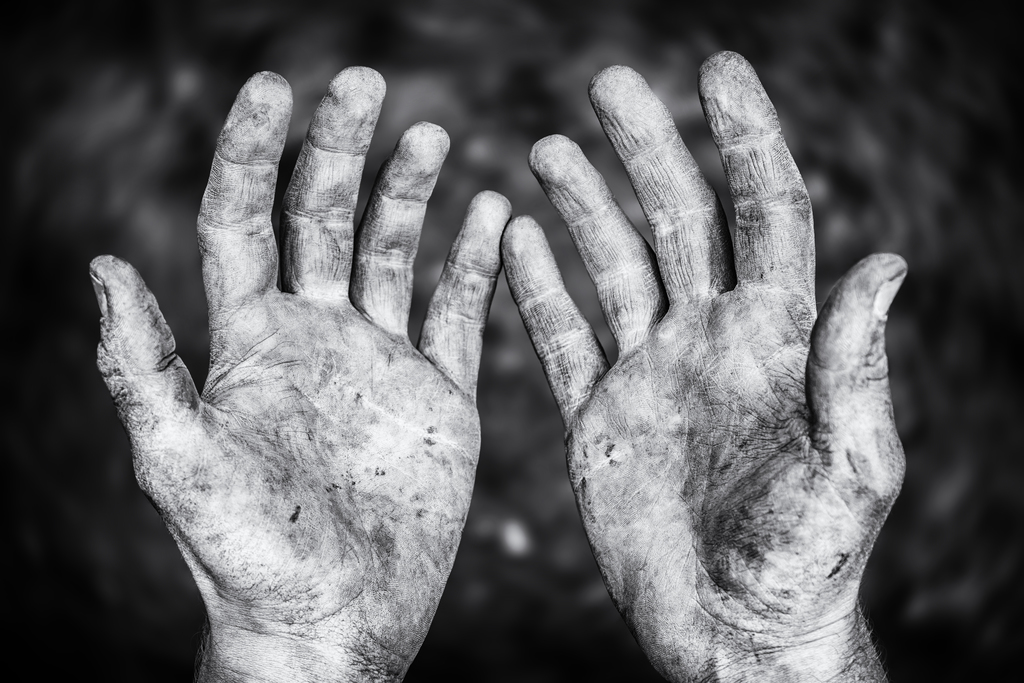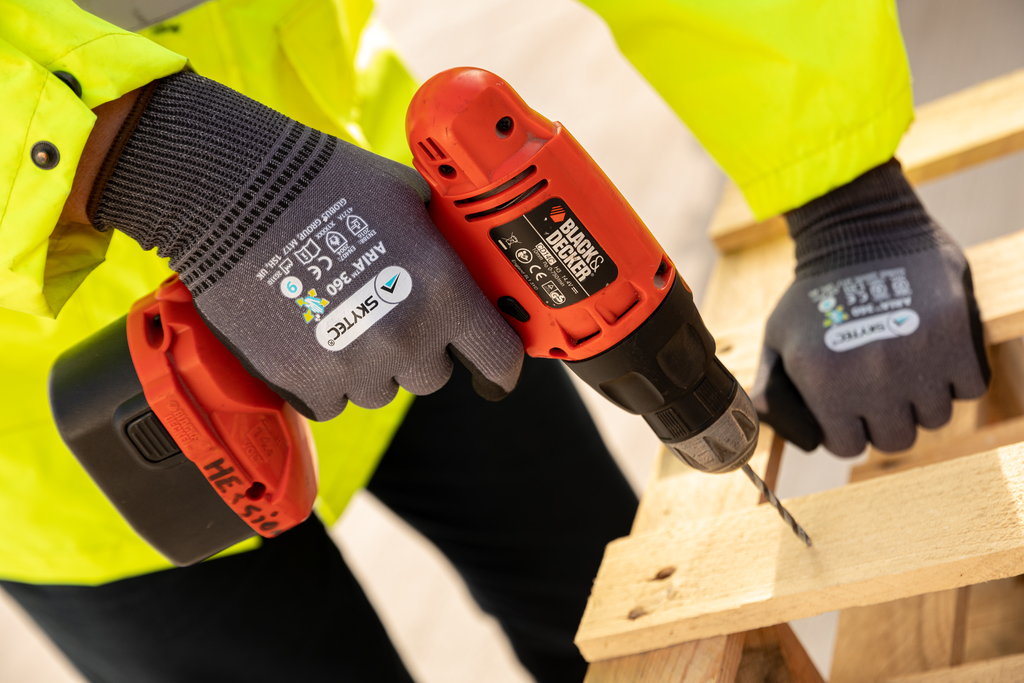
Kelly Rose
Editor

Kelly Rose
Editor
Hard working hands can suffer with injuries, cuts and wear and tear often making it difficult to carry out the task at hand. Nicholas Green looks at what employers can do to help protect help protect these amazing tools.
Did you know that about one-quarter of the motor cortex – the part of the brain which controls all movement in the body – is devoted to the muscles in the hands?
The mechanical system of the hands is delicate and complex, comprising 29 joints, 123 ligaments and 27 bones. When one part of this intricate system fails it can put a halt to hand function altogether. So, looking after these amazing tools should be a priority, right?
According to the Labour Force Survey, around 693,000 people sustain an injury at work every year, and some of the most common reported injuries are to the hands. Nicks, lacerations, crush injuries and chemical burns are frequently sustained by workers across multiple sectors including manufacturing, service work and construction. Every one of these injuries has the potential to take an employee out of the work force.
These statistics illustrate the real need for a change in the way employers approach hand protection. With the correct knowledge, understanding and support from reputable industrial glove manufacturers, you can do just that while reducing the number of hand-related injuries in the workplace.
As an employer, you're required by law to protect your employees, and others, from harm. Under the Management of Health and Safety at Work Regulations 1999, the minimum you must do is:
Identify what could cause injury or illness in your business (hazards)
Decide how likely it is that someone could be harmed and how seriously (the risk)
Take action to eliminate the hazard, or if this isn't possible, control the risk
Assessing risk is just one part of the process used to control risks in your workplace. To reduce the risk of injury further you can look to engineer the risk away, change processes and materials, and use personal protective equipment (PPE).
The modern-day, busy health and safety professional may not always have the opportunity to be proactive in completing a comprehensive workplace hand protection survey. However, from my experience in supporting thousands of UK-based employers, those that follow a refined and thorough survey process reap greater rewards in reducing hand-related injuries than those who don’t.
Innovation and glove technology
Hand protection across an entire workforce is a dual responsibility between the heath and safety professional and the hand protection manufacturer. To be effective, it’s vital that we work together to understand and evaluate the best possible range of work gloves for you that combats the risks and environmental challenges in the workspace whilst also maintaining efficiency and comfort for the wearer.
The Globus Hand Protection Programme (GHPP) is designed to ease this burden and deliver a robust solution for employers by following a concise methodology and process which includes, but not limited to.:
Look at what we want to achieve – reduced accidents, reduction of SKUs, reduced waste, extended product life, increased productivity, and enhanced wearer experience
Understand the process – who does what, where and how often
Understand the risks – mechanical, chemical, thermal etc.
Engage the workforce – operational, engineering, production
Evaluate and record – comprehensive sampling and recorded feedback of performance
Calculate and introduce – understand the various agreed metrics: commercials, performance indicators, waste, productivity etc.
A process like the GHPP – undertaken by experienced, technical personnel and supported by unrivalled product development – will, if administered correctly, deliver a measurable advantage in the workspace and help to protect your workforce.
Not only will it provide a compliant, technical suite of hand protection that has been thoroughly evaluated and proven to be effective, it will also yield a number of commercial gains. These include extended product service, enhanced wearer experience (through increased comfort, fit and tactility), increased productivity, predicted stock holding, and reduced litigation exposure and waste.
On top of this, the programme can help employers to deliver substantial environmental benefits too, supporting environmental and social responsibility and boosting businesses’ green credentials through the use of biodegradable materials or manufactured from recycled materials.
There are numerous examples of sustainable and environmentally friendly gloves on the market which can do just this.
One example is the Redeem, and Recon ranges from Skytec. A pair of Redeem gloves incorporates recycled materials equivalent to a 500ml plastic bottle. Made from 50% recycled polyester, Redeem also comes complete with biodegradable polybag packaging.
The Recon glove is also manufactured with 44% recycled materials, comes complete with paper strap packaging, reducing single-use plastic, protecting the environment.
Another example is our Genium range which uses a “Smart Polymer”, a renewably sourced polymer of plant origin. The gloves contain 30% renewably sourced materials, and production requires 40% less energy to produce, reducing CO2 emissions by over 60%.
Cut Resistance legislation and changes to EN388
The development of the cut resistance standard, to support the comparison of the performance of industrial cut resistant gloves, has significantly improved the ability of safety managers to select appropriate products to combat identified risks.
Cut testing of industrial gloves has always had huge variability and the ratings can give a false sense of security and comfort to the user and specifier.
For example, under the old blade cut resistance test, receiving a level 5 result (20+ reciprocating strokes of the blade with a fixed load of 500g) can mean there is a wide range of performance scope. I often hear safety professionals and even industrial glove manufactures speak of gloves being a “low 5” or a “high 5”.
A glove manufacturer could have a product that can withstand just over 20 strokes of the blade while some, due to the materials contained in it, can withstand in excess of 60 strokes – does this mean that the latter is more cut resistant? No, not necessarily.
The latter could be manufactured from hard glass fibres that can dull the test blade creating a false sense of performance. In addition, under normal working process gloves can degrade and fracture when the hand moves.
It’s clear that a more robust way of challenging this process was needed to provide a more clear and obvious understanding of the gloves’ cut resistant performance. The ISO 13997 method introduced more recently uses a straight blade drawn across a small piece of the fabric until cut-through takes place. The principle of this test is to vary the load required to be applied to the blade in order to facilitate cut-through in a known distance.
The cut resistance of the glove is then measured on the load required to cut through. Thus, the greater the force needed (in N), the greater the resistance to cutting. This can be seen in the table below.

But for industrial gloves, cut resistance, as important as it is, should not be the only factor to consider. A product with a high cut resistant factor, without the correct coating to give the wearer adequate control and grip will not properly protect them.
Manufacturers continually look to develop glove coatings that provide industrial strength grip on many common surfaces. High abrasion resistant foam nitrile coatings used on many of the cut and non-cut resistant gloves, give the wearer that enhanced control and a reduced risk factor that is so important for safety in the workplace.
Globus Group
With so much of the motor cortex devoted to the muscles in the hand, it’s only right that our approach to health and safety in the workplace shares an equal focus. As technology improves and develops within fibre and yarn innovation, leading PPE manufacturer Globus Group has been at the forefront of harnessing innovation to produce protective gloves at the cutting edge.
Our gloves not only perform at cut levels C and D but are manufactured from technical yarns that can be knitted in both 18 and 21 gauge. This results in gloves with are thinner and conform more closely to the curve of the hand, giving the wearer comfort and precision when undertaking even the most precise tasks.
Nicholas Green is corporate account director at international PPE manufacturer Globus Group. For more information, visit https://globusgroup.com/




Middlemore Lane West
Redhouse Industrial Estate
Aldridge
WS9 8BG
UNITED KINGDOM
01922 457421